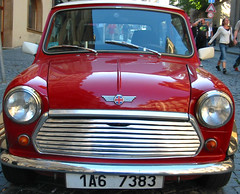
Oktoberfest, of course, traces it origins to the public nuptial celebrations of the Bavarian Prince Ludwig and his bride Therese. They were wed on 12 October, 1810; and the festival that followed lasted 5 days, climaxing in a horserace, which proved to be so exciting that another festival and horserace was scheduled for the following year. (It wasn’t until 1896 that brewers became an integral part of the Oktoberfest celebration.)
But who were these people? Ludwig and Therese. Well, I can’t say how they felt about beer, but Ludwig was certainly what could be called a lover of beauty, be it in art, architecture or women. During his reign as King of Bavaria (1825-1848) he commissioned many new buildings for Munich, many of which are considered to be the most beautiful in Munich today. He was also the patron of the artist Josef Stieler. One of their more ambitious projects was the “The Gallery of Beauty,” which is comprised of portraits of Bavarian women whose beauty Ludwig considered worthy of memorializing. Ludwig is also well known for his many amorous love affairs, frequently with women in the highest reaches of Bavarian society. Personally, I’m struck by how much he reminds me of Hugh Hefner.

Without digging into the German history section of the library, I can’t report too much about Therese. Though I can guess that she was an unhappy woman. I doubt she shared her husband’s joie de vivre attitude, and she appears to me (in her portrait) to be a stern woman. I don’t think it would be much of a jump to conclude that theirs was a passionless marriage, the result of political expediency. Which, for me, makes if all the more ironic that the site of Oktoberfest, the Theresienwiese, is named in her honor. I’m pretty sure Ludwig would love the modern Oktoberfest, but I somehow think that Therese would disapprove.
A note: Ludwig should not be confused with his more famous grandson, Ludwig II, the truly eccentric king who nearly bankrupted his family by building private castles all over Bavaria and sponsoring the work of composer Richard Wagner.






